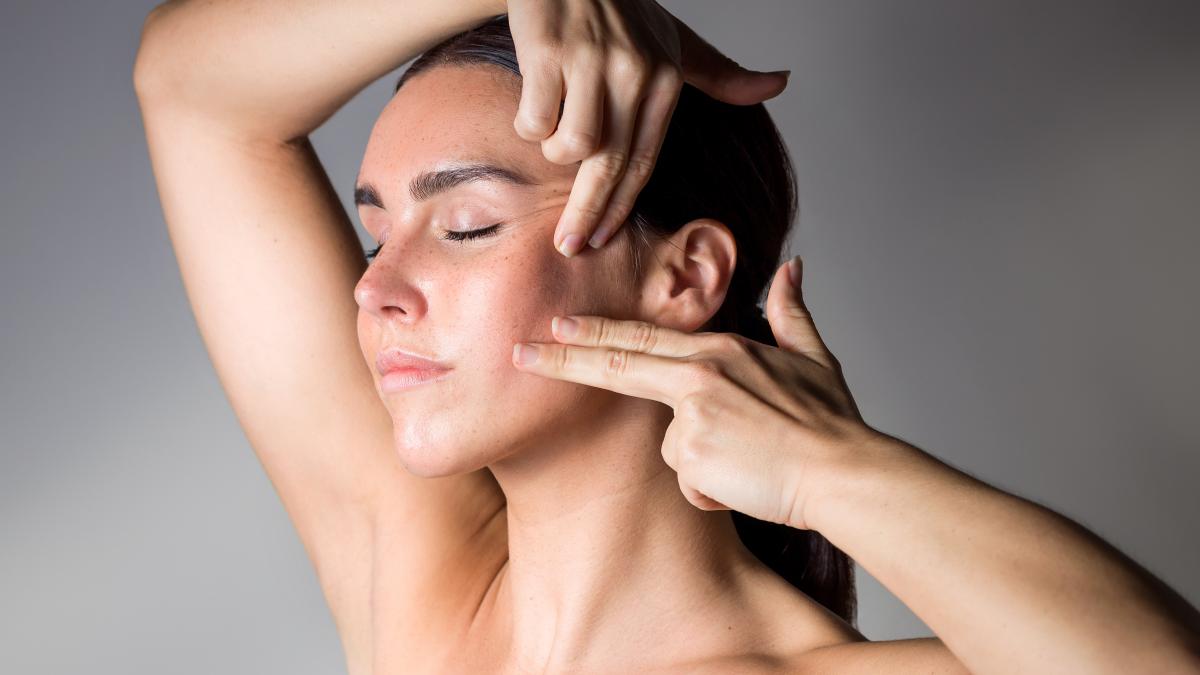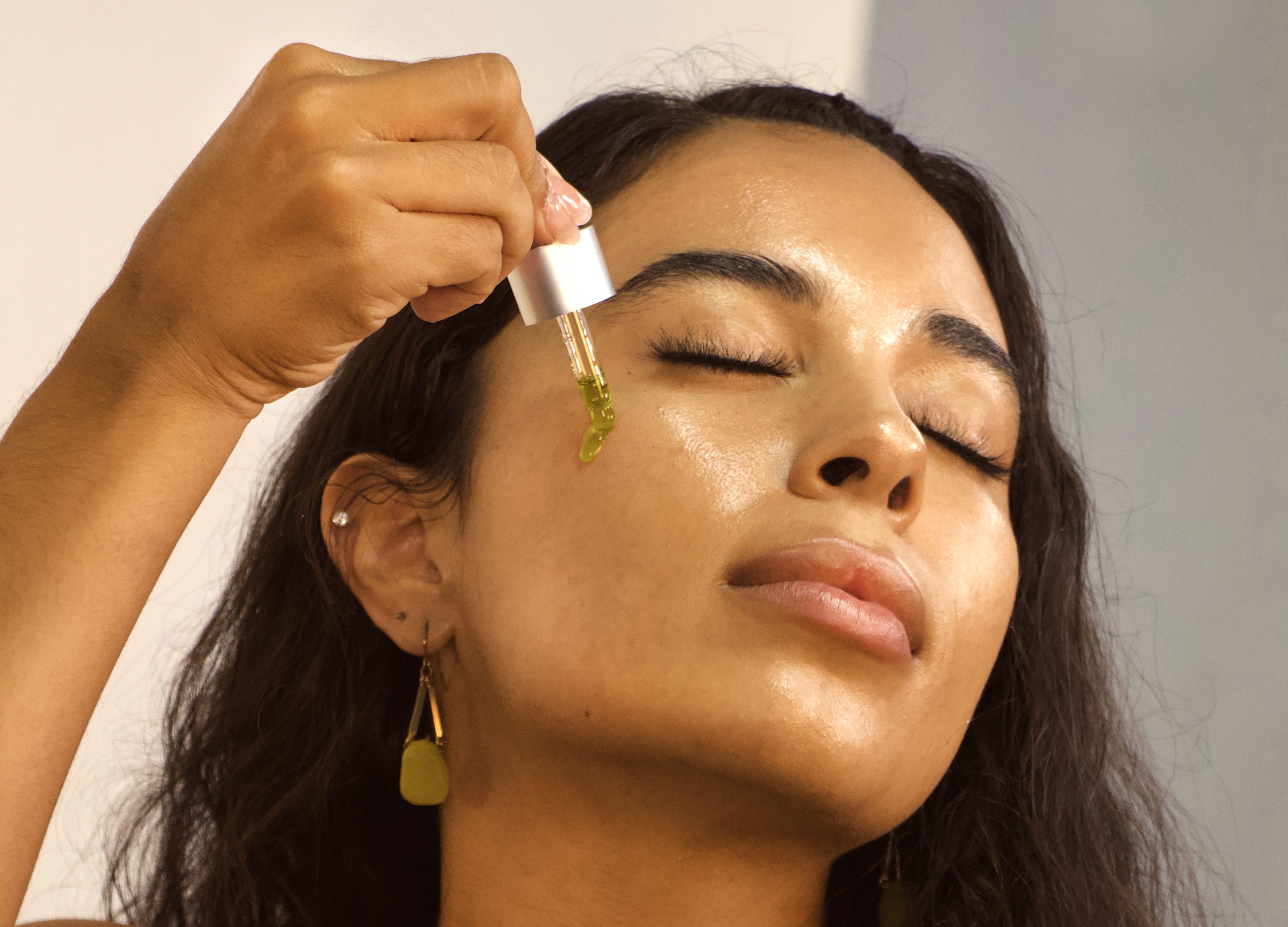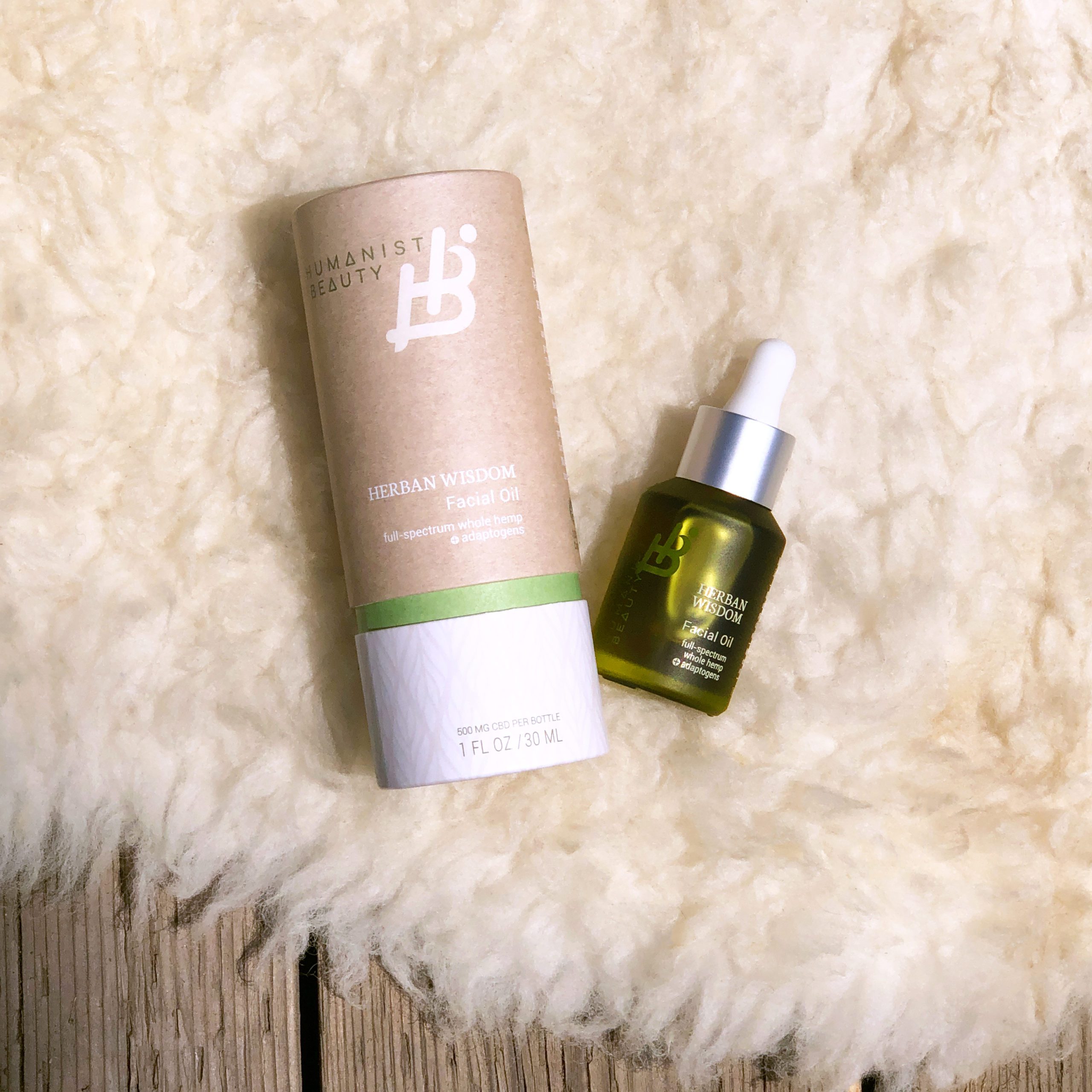All About Facial Yoga
In the ongoing quest to age gracefully and exude a sense of inner peace, many people are searching for natural, affordable options that will help them look and feel better. Facial yoga involves massages and exercises that stimulate the muscles, skin, and lymphatic system by relaxing your face muscles to help alleviate tension, stress, and worry. In this blog, we will dive into facial yoga and its origins, while also touching on its benefits and how you can practice facial yoga in the comfort of your own home.
What Is Facial Yoga?
Facial yoga doesn’t involve the usual Shavasana or Downward-Facing Dog poses that you’re familiar with from your yoga practice. Essentially, “yoga” is just a catchy way to say facial exercises that move the muscles on your face into certain positions — similar to yoga for your body.
The idea is that performing these exercises will keep your face looking toned by lifting areas that are drooping, which can trim years from your visage. A balanced facial yoga routine includes exercises along with massage, relaxation, and acupressure techniques.
“The aim is to create a moment of self-care where you improve blood circulation for a healthy glow and reduce stress and tension in your face,” says Dr. Elsa Jungman, Ph.D., a scientist, microbiome expert, and proponent of facial yoga.
“Most people hold tension in their faces, whether through facial expressions or too much time in front of a screen. All these daily activities cause patterns in how we use our face and the specific muscles we recruit,” Dr. Jungman says. “This is why we want to focus more on releasing and softening our faces to let go of these patterns and any held facial tension.”
You can create a facial yoga routine to target a specific area of concern in your face, such as frown lines, forehead lines, or crow’s feet; or you can focus on concerns related to issues such as stress, anxiety, or sleep. With a consistent facial yoga routine, you can help to create positive long-term effects for your skin.
The Origins of Facial Yoga and Fumiko Takatsu
While facial yoga is a rising trend, utilizing facial exercises for skin benefits is not a new practice. Egyptian queen Cleopatra, for example, is believed to have used forms of facial exercises to keep her skin toned and youthful.
Fumiko Takatsu, known as a facial yoga pioneer and founder of the famous Face Yoga Method, wrote about its origins on her website, saying she came up with the concept following a car crash in which her body was injured and her face was left looking “asymmetrical”.
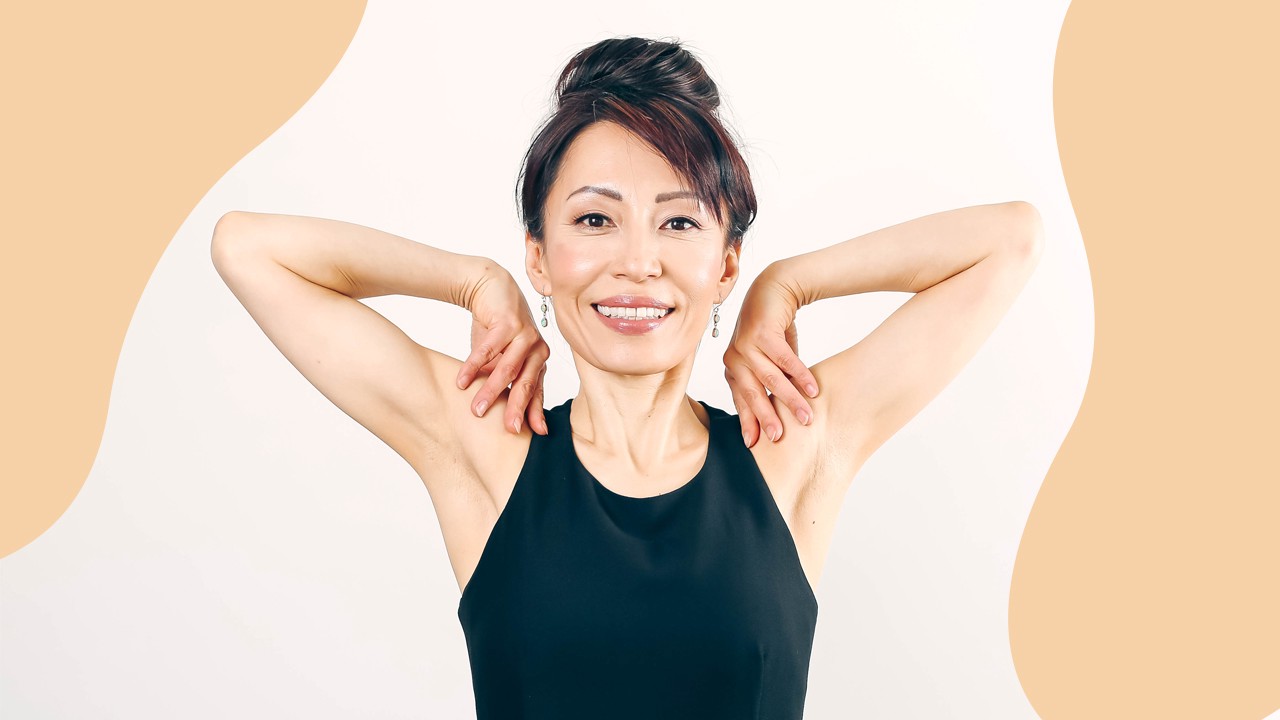
Pictured: Fumiko Takatsu Source: Medium
Standing in front of the mirror one day, Takatsu had a realization: “If I exercise my body muscles, I should be able to do the same for my face.” After Takatsu started practicing this method, people began praising her appearance and were eager to know how she achieved such results. With these experiences, the Face Yoga Method was born.
Takatsu says, “Women and men come to us to look younger, naturally, but they stay for the way they feel and the value they get for being a Face Yogi. We offer 100% natural alternatives to cosmetic procedures and plastic surgeries but we never label ourselves as anti-aging.
The mission behind the Face Yoga Method, according to Takatsu, is to empower men and women to reclaim their confidence and embrace their age naturally and become part of the new age in beauty — the PRO-age movement.1
Today, thanks to individuals like Takatsu, many celebrities swear by facial yoga, including Madonna, Cindy Crawford, and the Kardashians. Meghan Markle, for example, has often praised the practice and uses facial yoga exercises to keep the volume in her cheeks.
The Benefits of Facial Yoga
The benefits of facial yoga may be more than skin deep. Touted as a natural facelift that also enhances your overall health, practitioners say its benefits are immense. Additionally, research supporting these benefits is mounting.
A small 2018 study investigated the effectiveness of 32 facial exercises in reducing the appearance of aging in middle-aged women. For the first eight weeks, the participants did daily 30-minute sessions of facial exercises. During the next 12 weeks, they did the sessions every other day.
Most of the women showed improvements in the fullness of their faces and were highly satisfied with the visible results. They reported significant improvement in 18 of 20 facial features. Researchers plan to further these findings through more studies in a similar vein.2
Another small 2018 study examined the benefits of facial exercises in improving the mental health of older individuals. The participants did 30-minute facial exercise sessions twice weekly for 12 weeks, which included yogic breathing as well as rhythmic facial movement and muscle stretching.
The results reported positive improvements related to mental health, facial expression, and tongue muscle power. It was also noted that some of the participants may have looked younger at the end of the study, with two dermatologists estimating the participants’ average age was 50.8 years old at the start of the study and 48.1 years old 20 weeks later.3
In addition to the reported reduction of the appearance of fine lines and wrinkles, facial yoga may promote increased lymphatic drainage leading to reduced puffiness and improved circulation. Face yoga practitioners also report that it may help to:
- Control Face Muscles
- Promote Proper Nostril Breathing
- Firm the Neckline
- Reprogram Muscle Memory
- Improve Symptoms of Temporomandibular Joint (TMJ) Disorders4
- Make Your Face More Symmetrical
- Reduce the Appearance of Dark Under Eye Circles
- Improve Confidence
- Tone Face Muscles
- Correct Sagging
- Generate Positive Emotions
- Make Your Face Less Rounded
It’s important to keep in mind that facial yoga won’t alter the texture of your skin, according to Harvard Health, though moving and stretching scarred skin through facial yoga can lessen the appearance of scars.4
DIY Facial Yoga
You can perform facial yoga in the comfort of your own home as part of your skincare routine and self-care practice. Dr. Jungman recommends practicing for five to 10-minutes each day to start, eventually working your way up to 15 to 20-minutes per day.
Follow this routine, shared by the skincare experts at Origins, for a serene rejuvenation that can leave you feeling empowered:
Step 1
Try to remember to always sanitize before doing your skincare routine. “Bacteria is all over our hands,” confirms Virginia-based dermatologist Dr. Lily Talakoub. “From our doorknobs to desks, keyboards, shopping carts — it’s everywhere. Your face is a warm home for bacteria, so wash and sanitize your hands before doing any skincare to prevent any transfer of bacteria, which can cause acne and skin infections.”
Step 2
Apply two pumps of your favorite facial oil to your fingertips, such as the Humanist Beauty Herban Wisdom® Facial Oil, which is an exceptionally-crafted formula that’s a powerful skin treatment fusing clean plant nutrients rich in antioxidant, adaptogenic, rejuvenating, and moisturizing properties.

Step 3
If your favorite facial oil is scented with aromatherapy botanicals, tent your hands over your nose while breathing deeply to inhale the aromas. Next, spread the serum all over your face. Bend your index and middle fingers, then place your chin between those knuckles. Gently glide your fingers upward along your jawline three times; take a deep breath.
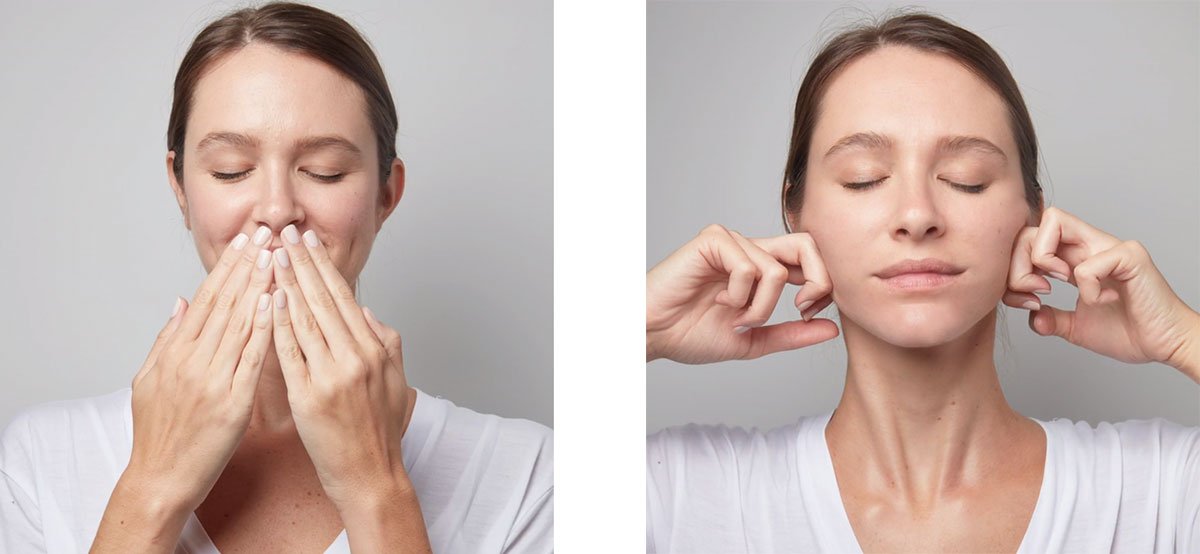
Source: My Related Life
Step 4
Place your thumbs beneath your cheekbones with palms facing forward. Guide your thumbs up toward your temples three times; take a deep breath. Position your fingertips in the center of your brow. Applying firm pressure, sweep up and out toward your hairline and temples three times; take a deep breath.
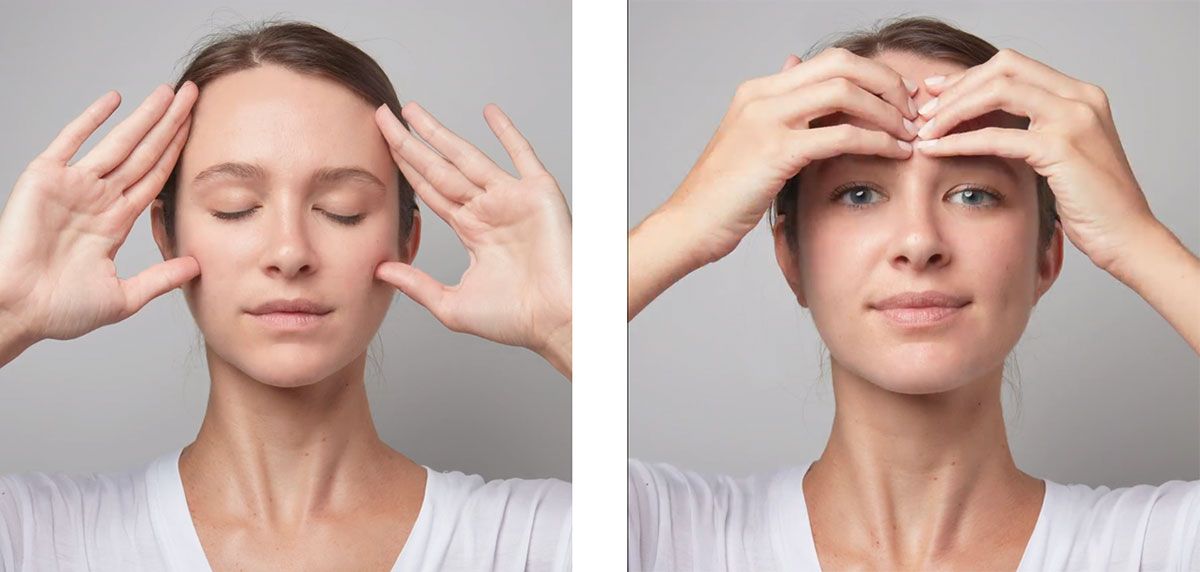 Source: My Related Life
Source: My Related Life
Step 5
If needed, add a few more drops of your facial oil onto your hands. Slide your fingers upward on each side of your neck three times. With your fingertips beneath your jawline, gently push your chin upward; take a deep breath.

Source: My Related Life
Step 6
Repeat as many times as needed. After you’re done, bask in the glow of your DIY face renewal.
In Conclusion
Facial yoga is a wonderful self-care technique that may improve your appearance by softening, stretching, and strengthening your face muscles. This outer transformation is often accompanied by feelings of serenity and confidence. According to Danielle Collins, the founder of Danielle Collins’ Face Yoga, facial yoga can help you get in tune with what you need by activating the healing power of your own hands.
She says, “I also recommend using positive affirmations as part of facial yoga, which helps us to feel grateful for our faces and skin while cultivating self-love. Engaging in this nourishing practice helps you to feel calmer and happier.”
Try to dedicate some time daily for facial yoga since Collins points out: “Regular daily practice is what gives best results.” After all, taking time for yourself each day can be a gentle reminder to tune in to your needs and how you’re feeling.
Do you use any facial yoga techniques in your self-care and skincare routine? Let us know in the comments!
References:
https://www.ncbi.nlm.nih.gov/pmc/articles/PMC5885810/ [2]
https://pubmed.ncbi.nlm.nih.gov/29503371/ [3]
https://pubmed.ncbi.nlm.nih.gov/23356206/ [4]
https://www.health.harvard.edu/staying-healthy/does-your-face-need-a-workout [5]

